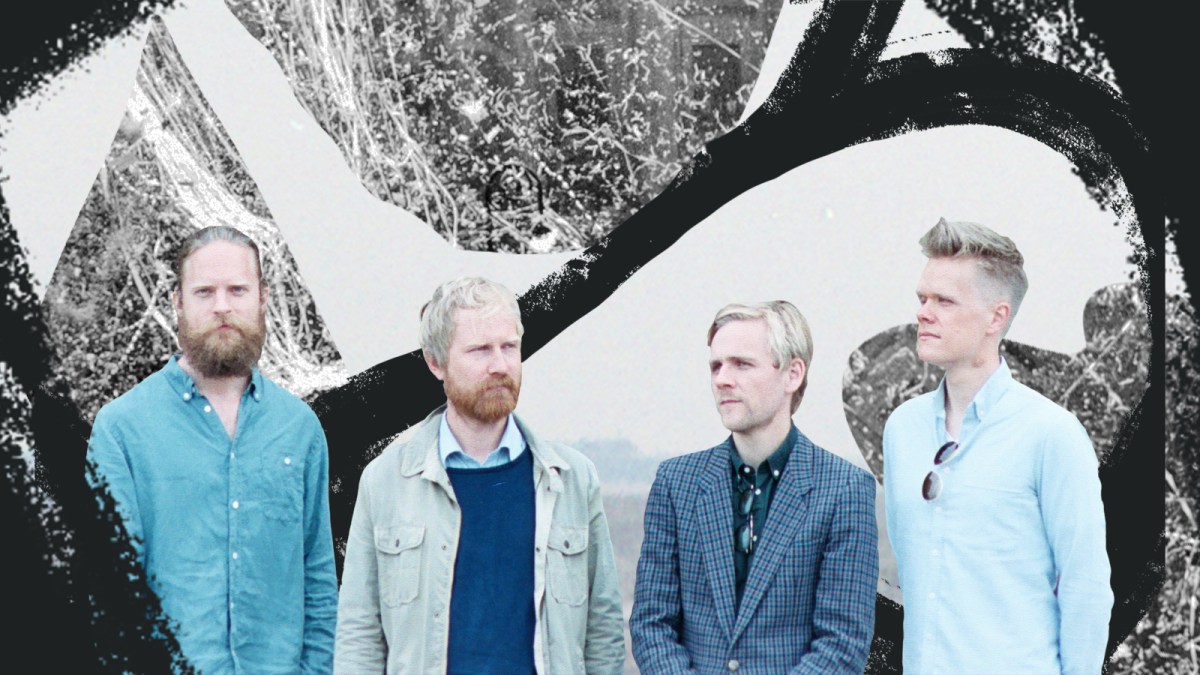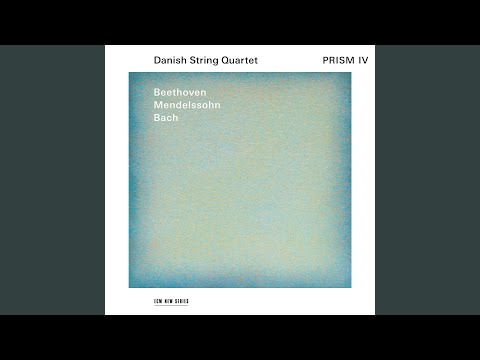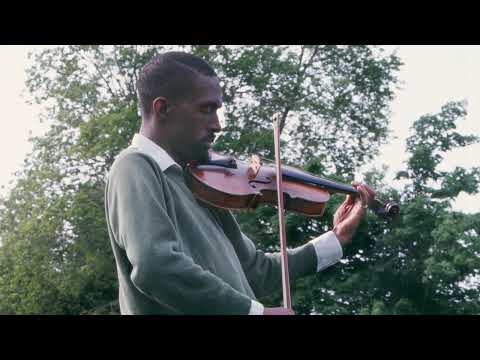“Time present and time past are both perhaps present in time future,” writes T.S. Eliot at the beginning of his Four Quartets. The work was in part inspired by Beethoven’s String Quartet Op. 132, which Eliot found “quite inexhaustible” as a musical study. While not the bounciest of Beethoven’s works—a descriptor more appropriate to his early quartets—Eliot found “a sort of heavenly, or at least more than human gaiety, about some of [Beethoven’s] later things which one imagines might come to oneself as the fruit of reconciliation and relief after immense suffering.”
If the last week has reminded us of anything, it’s that suffering present and suffering past are both perhaps present in suffering future. Which makes the Danish String Quartet’s latest installment of their “Prism” series—centered around the Op. 132 quartet—all the more timely. With the first release in 2018, the quartet (violinists Rune Tonsgaard Sørensen and Frederik Øland, violist Asbjørn Nørgaard, and cellist Fredrik Scøyen Sjölin) began mining the depths of Beethoven’s late quartets, pairing them with Bach fugues and comparatively modern quartets by Shostakovich, Bartók, and Schnittke. Bach’s obsessive repetitions signal some of the equally obsessive themes that recur from one Beethoven quartet to the next, as well as the composer’s own nods to Bach even as his works became more daringly contemporary and forward-leaning.
For the Danes (and, in Sjölin’s case, Norwegian), the Scandinavian sense of a flattened hierarchy makes these albums sound less like comparative literature exercises—all roads leading back to Beethoven and Bach as paragons of musical perfection—and more like the sort of lolling, associative conversations that happen over a kitchen table. The “Prism” series is a sprawling dinner where the candles have begun to taper out, the napkins are stained with wine and sauce, but a discussion is just starting to go somewhere and nobody wants to be the first person to stand up. “Other echoes inhabit the garden,” Eliot writes in Four Quartets. “Shall we follow?”
Maybe it’s the Eliot, maybe it’s the carnal craving for some relief after an endless parade of suffering, but “Prism IV” seems to be one of the most salient points made in this multi-album conversation. Beethoven wrote Op. 132 at a moment of immense suffering in his life. He nearly died the winter he composed the quartet, and its central movement is structured as a “song of Thanksgiving” played with a sense of renewed strength. Moments sound closer to Arvo Pärt’s minimalistic beatitudes, especially with the Danes, who eke out each note with a naturalism that undoes the patina of polish and reverence that accumulates on even Beethoven’s roughest works. (“Just because it’s Beethoven doesn’t mean you can’t look at the music with a critical eye,” Frederik Øland said in a 2016 interview with VAN’s German edition. “You can’t change the music, of course, but you don’t have to make it a religion either.”) They’re figuring out what Beethoven is saying in time with the composer himself, as if trying to locate him on a giant “You Are Here” map.
The latest from VAN, delivered straight to your inbox
Unlike previous installments of the series, “Prism IV” concludes with Mendelssohn’s String Quartet No. 2, written in the year that Beethoven died and with the composer’s shadow looming large over the movements. Mendelssohn’s own father disdained Beethoven’s later works, but the young composer was fascinated by them—much like Eliot—and this quartet reflects that obsession, even including one movement titled “Ist es wahr?” (“Is it true?”) in homage to the quotation Beethoven appended to a movement of his Op. 135 quartet, “Muss es sein?” (“Must it be?”) It’s the best kind of fan fiction, revealing more about the author than it does about his source of inspiration. In this context, the Danish String Quartet charts the music with the same fever as the young Mendelssohn had for Beethoven’s late quartets; Mendelssohn’s music is one of the other echoes in the garden, and they are game to follow.
Wild Up is at an earlier stage in its own multi-volume recording series dedicated to Julius Eastman, one that the Los Angeles-based ensemble will stretch out over seven albums, many offering world premiere recordings of recently-unearthed works. On Volume 2, this includes the title track, “Joy Boy,” an explosion of what Eastman describes in the score as “ticker-tape music.” Given how many tragic details of Eastman’s life are often scattered down before one hears a note of his music, it’s refreshing to hear this side of him: an unadulterated ebullience that passes like a parade outside your window. Like most parades, there is a political undertone. But here, those politics feel underscored by chaotic affirmation versus cacophonic anger. It’s akin to Eastman drawing a big circle and writing out: “I am here.”
The other first recording here is “Buddha,” one of Eastman’s last-known works, and one—like many of his compositions—left open to interpretation. Wild Up commits to this by offering “Buddha” in two iterations, subtitled “Field” and, later on in the album, “Path.” The score for “Buddha” visualizes the architecture of its sound; there are notes and dynamics, but Eastman’s design of the score also shapes the notes as the center of an oval, with concentric lines emanating from the center. As “Field,” this emanation feels like the meditative exercises that locate the practitioner’s seat in a room, on a street, in a neighborhood and a city—emanating ever outward to understand the place we occupy in the universe and the subtle interconnectedness of all life. “Path” still maintains that circularity, but charges outward, slow but surefooted.
With director Christopher Rountree, Wild Up mimics this same structure in the outline of the album, beginning with “Joy Boy” before moving into “Buddha (Field).” At the center of the album then is another duo pairing, “Touch Him When” performed in a pared-down solo arrangement by guitarist Jiji (the stage name of ensemble member Jiyeon Kim) in versions subtitled “Light” and “Heavy” that move from a Zen-like space of neutrality (“Light”) into a holy war of dissonance (“Heavy”). It’s here that “Buddha (Path)” picks up, leading us into the twins of “Joy Boy” and “Stay On It.” We’re once again in a sea of ticker tape, of Pollock-like splatters of joy. Listening to the album a second and third time, it’s this sense of hard-won pleasure that continues to echo out, ecstatic and enduring. ¶
Subscribers keep VAN running!
VAN is proud to be an independent classical music magazine thanks to our subscribers. For just over 10 cents a day, you can enjoy unlimited access to over 875 articles in our archives—and get new ones delivered straight to your inbox each week.
Not ready to commit to a full year?
You can test-drive VAN for one month for the price of a coffee.



